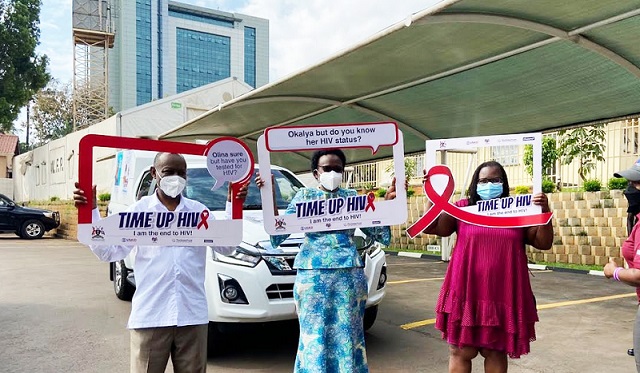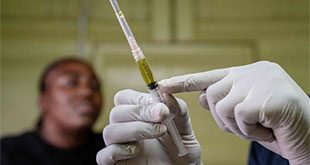
Between 4% and 13 % of Africans are thought to carry this particular gene
Kampala, Uganda | RONALD MUSOKE | Some HIV+ people of African ancestry have been found to naturally have lower viral loads of HIV, according to the latest research published on Aug.02 in the journal, Nature.
The paper: “Africa-specific human genetic variation near CHD1L associated with HIV-1 load,” shows the first new genetic variant related to HIV infection in almost 30 years of research and how it could, in future, help direct the development of new therapies or treatments as well as approaches for people living with HIV.
“By studying a large sample of people of African ancestry, we’ve been able to identify a new genetic variant that only exists in this population and which is linked to lower HIV viral loads,” said Paul McLaren from the Public Health Agency of Canada’s National Microbiology Laboratory and joint first author on the paper.
According to the paper, between 4% and 13 % of people of Africans are thought to carry this particular variant. Viral load is the amount of a virus in a patient’s system. When a patient has higher levels of the virus, his or her health deteriorates faster and has increased risk of transmission. However, the researchers say viral load varies widely among infected individuals and is influenced by a number of factors including an individual’s genetic makeup.
The human immunodeficiency virus (type one) or HIV-1 is the commonest type of HIV. It is also the most infectious and is responsible for the global HIV/AIDS crisis because of its highly virulent nature.
Researchers say identifying new targets for its treatment is important. The study focuses on individuals of African descent due to the disproportionate burden of HIV-1 in Africa and the high genetic diversity in the region.
According to UNAIDS, there were 38.4 million people living with HIV globally in 2021 and two out of every three people living with HIV were in sub-Saharan Africa according to the World Health Organisation (WHO).
Study findings
The researchers note in their paper how important it is to understand HIV among African populations. “Most of what we know about the relationship between our DNA and HIV comes from studies among European populations,” their paper notes in part.
“Given that HIV disproportionately affects people on the African continent more than 25 million people who are HIV-positive live on the continent – it’s important to better understand the role of genetics in HIV infection in African populations.”
An international team of researchers analysed the DNA of 3,879 people of African ancestry living with HIV-1. The researchers identified a variant within a region on chromosome 1 containing the gene CHD1L (chromodomain helicase DNA binding protein 1) which is associated with reduced viral load in carriers of the variant.
Reducing viral load
CHD1L is known to play a role in repairing damaged DNA, though it is not clear why the variant should be important in reducing viral load. However, as HIV attacks immune cells, researchers at the University of Cambridge’s Department of Medicine, led by Dr. Harriet Groom and Prof. Andrew Lever, used stem cells to generate variants of cells that HIV can infect in which CHD1L had either been switched off or its activity turned down.
HIV turned out to replicate better in a type of immune cell known as a macrophage when CHD1L was switched off. In another cell type, the T cell, there was no effect perhaps surprising since most HIV replication occurs in the latter cell type.
“This gene seems to be important to controlling viral load in people of African ancestry. Although we don’t yet know how it’s doing this, every time we discover something new about HIV control, we learn something new about the virus and something new about the cell. The link between HIV replication in macrophages and viral load is particularly interesting and unexpected,” said Dr. Groom.
“With more than a million new HIV infections a year, it’s clear that we still have a long way to go in the fight against HIV – we are yet to have a vaccine to prevent infection, have yet to find a cure and still see drug resistance emerging in some individuals. The next step is to fully understand exactly how this genetic variant controls HIV replication,” said Prof. Manjinder Sandhu, the Chair of Population Health and Data Science in the School of Public Health, Faculty of Medicine at Imperial College London.
No doubt, HIV remains a major threat to global health. And although there have been major advances in research in recent years, a cure for HIV remains elusive. However, a combination of pre-exposure drugs and medicines that dramatically reduce viral loads has had a major impact on transmission of the virus.
Still, 1.5 million people were newly infected in 2021. In the same year, 650,000 people died from AIDS-related illnesses and a huge percentage of those who succumbed to the virus were African according to UNAIDS.
 The Independent Uganda: You get the Truth we Pay the Price
The Independent Uganda: You get the Truth we Pay the Price





